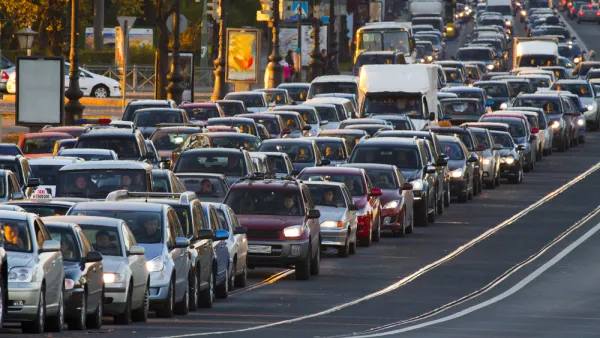The American Public Transit Association reports that transit ridership climbed to 10.3 billion trips during the first quarter of 2008, the “highest number of trips taken in fifty years.” That represents a 3.3 percent increase overall over the previous year while vehicle miles traveled, a measure of demand for car travel, fell by 2.3 percent, they observe.
The American Public Transit Association reports that transit ridership climbed to 10.3 billion trips during the first quarter of 2008, the "highest number of trips taken in fifty years." That represents a 3.3 percent increase overall over the previous year while vehicle miles traveled, a measure of demand for car travel, fell by 2.3 percent, they observe.
But what do these statistics mean for US travel more generally? Not much. At best, they reinforce transit's modern-day role as a niche transportation choice. At worst, they're a harbinger of transit's continued long-term decline. Here's why.
First, let's acknowledge that the increase in ridership is significant. If we convert ridership into passenger miles traveled-a distance-based rather than trip-based measure-a 3.3 percent increase translates into 1.6 billion passenger miles over the course of a year. That's a lot, particularly given the hurdles faced by transit in a high-end, services-based economy that demands more transportation flexibility and generates complex travel patterns. (This, btw, is the subject of my next book, Mobility First, due out this November.)
Yet, APTA's juxtaposition of the two numbers-transit ridership (trips) versus vehicle miles traveled (distance)-is misleading. Their reporting incorrectly implies that public transit is gaining on automobile travel. It isn't. In fact, it's losing ground. Transit's market share of all travel fell from 1.5% of all travel in 1980 to 1.0% in 2005 according to the U.S. Department of Transportation. Even with the gains in ridership, transit would be lucky to maintain its current market share, let alone forestall its long-term decline.
Public transit's gains also pale in comparison to the reduction in road-based travel. US travelers eliminated 112 billion passenger miles from our roadways in 2007. Fewer than 2 percent of those trips might have shifted to public transit even if we assume all of those passenger miles migrated onto buses and trains.
Notably, APTA pointed out that light rail, commuter rail, and heavy rail experience significant increases. But light rail only accounts for 3.4% of transit passenger miles nationally. Commuter and heavy rail together account for almost half of public transit ridership, but their growth was just 5.7% and 4.4% respectfully. Gas prices, in contrast, have increased by about 50 cents (14%) over the last year.
So, anyway you slice the pie, public transit's gains are much more modest than APTA's press release suggests, and the impact on overall travel patterns is minor despite higher gas prices. The data show that the public is not exactly "embracing" transit as an alternative to higher gas prices. Rather, they are simply cutting down on travel. It's not time to re-plan our regions based on or around transit's resurgence.

Analysis: Cybertruck Fatality Rate Far Exceeds That of Ford Pinto
The Tesla Cybertruck was recalled seven times last year.

National Parks Layoffs Will Cause Communities to Lose Billions
Thousands of essential park workers were laid off this week, just before the busy spring break season.

Retro-silient?: America’s First “Eco-burb,” The Woodlands Turns 50
A master-planned community north of Houston offers lessons on green infrastructure and resilient design, but falls short of its founder’s lofty affordability and walkability goals.

Test News Post 1
This is a summary

Analysis: Cybertruck Fatality Rate Far Exceeds That of Ford Pinto
The Tesla Cybertruck was recalled seven times last year.

Test News Headline 46
Test for the image on the front page.
Urban Design for Planners 1: Software Tools
This six-course series explores essential urban design concepts using open source software and equips planners with the tools they need to participate fully in the urban design process.
Planning for Universal Design
Learn the tools for implementing Universal Design in planning regulations.
EMC Planning Group, Inc.
Planetizen
Planetizen
Mpact (formerly Rail~Volution)
Great Falls Development Authority, Inc.
HUDs Office of Policy Development and Research
NYU Wagner Graduate School of Public Service





























